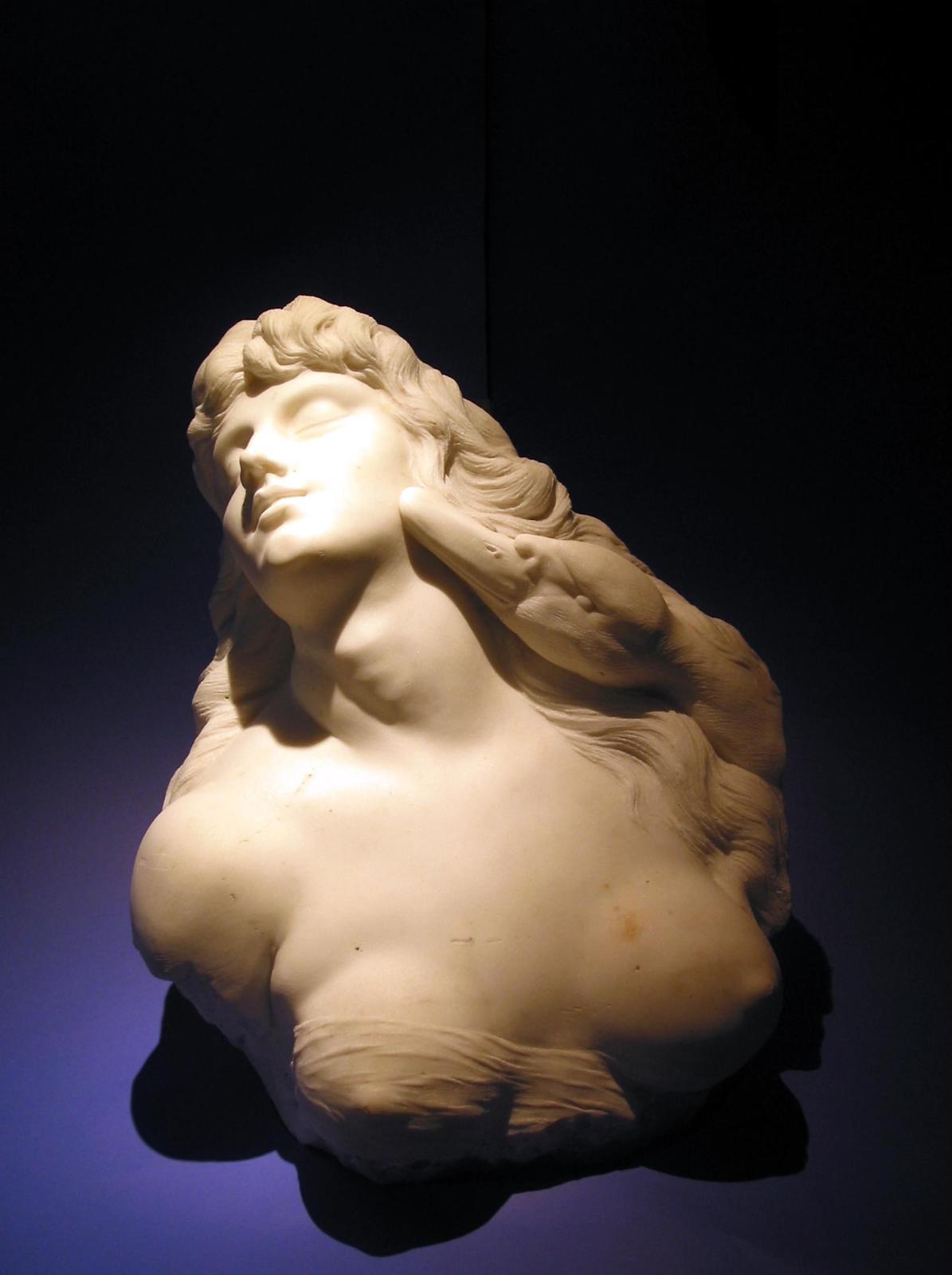
artist
Lambeaux, born in Antwerp, studied at the Antwerp Academy of Fine Arts. His first work, War, was exhibited in 1871. He produced a series of humorous groups leading up to The Kiss (1881), generally considered his masterpiece. He created a number of fountain pieces and numerous busts of important Belgian political figures. He was best known, however, for his erotic works, which drew a fair amount of controversy in the 19th century. His Temple of Human Passions, exhibited at the Ghent salon in 1889, was publically bashed over its content, deemed lustful and improper by much of Belgian society. Regardless, Lambeaux is remembered for his sensually evocative style.
Description
Leda and the Swan derives its subject matter from Greek mythology. In myth, Zeus takes the form of a swan and seduces the mortal woman Leda, who goes on to bear his children, Helen and Polydeuces. The subject was rarely seen in large-scale Antique sculpture, though smaller engravings on gems, cameos, and oil lamps exist, and a recent fresco depicting the scene was discovered in the ruins of Pompeii. Lambeaux’s version shows only the bust of Leda and the head of the swan, and in this way, it is more restrained than some others. Her expression and her bare breast, however, are both telling of the eroticism of the scene. The piece would likely have been considered scandalous in its day.
Lambeaux, born in Antwerp, studied at the Antwerp Academy of Fine Arts. His first work, War, was exhibited in 1871. He produced a series of humorous groups leading up to The Kiss (1881), generally considered his masterpiece. He created a number of fountain pieces and numerous busts of important Belgian political figures. He was best known, however, for his erotic works, which drew a fair amount of controversy in the 19th century. His Temple of Human Passions, exhibited at the Ghent salon in 1889, was publically bashed over its content, deemed lustful and improper by much of Belgian society. Regardless, Lambeaux is remembered for his sensually evocative style.
